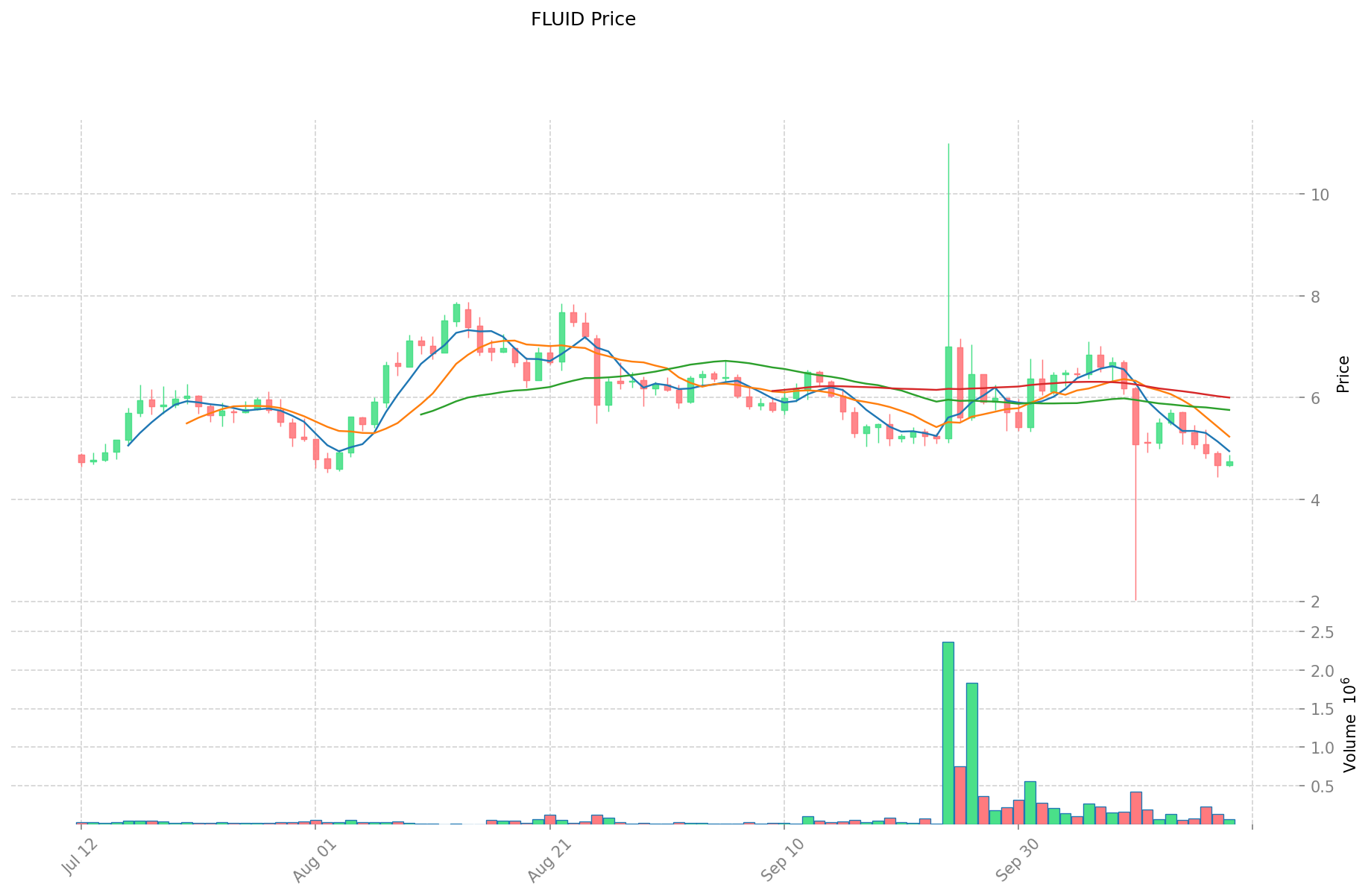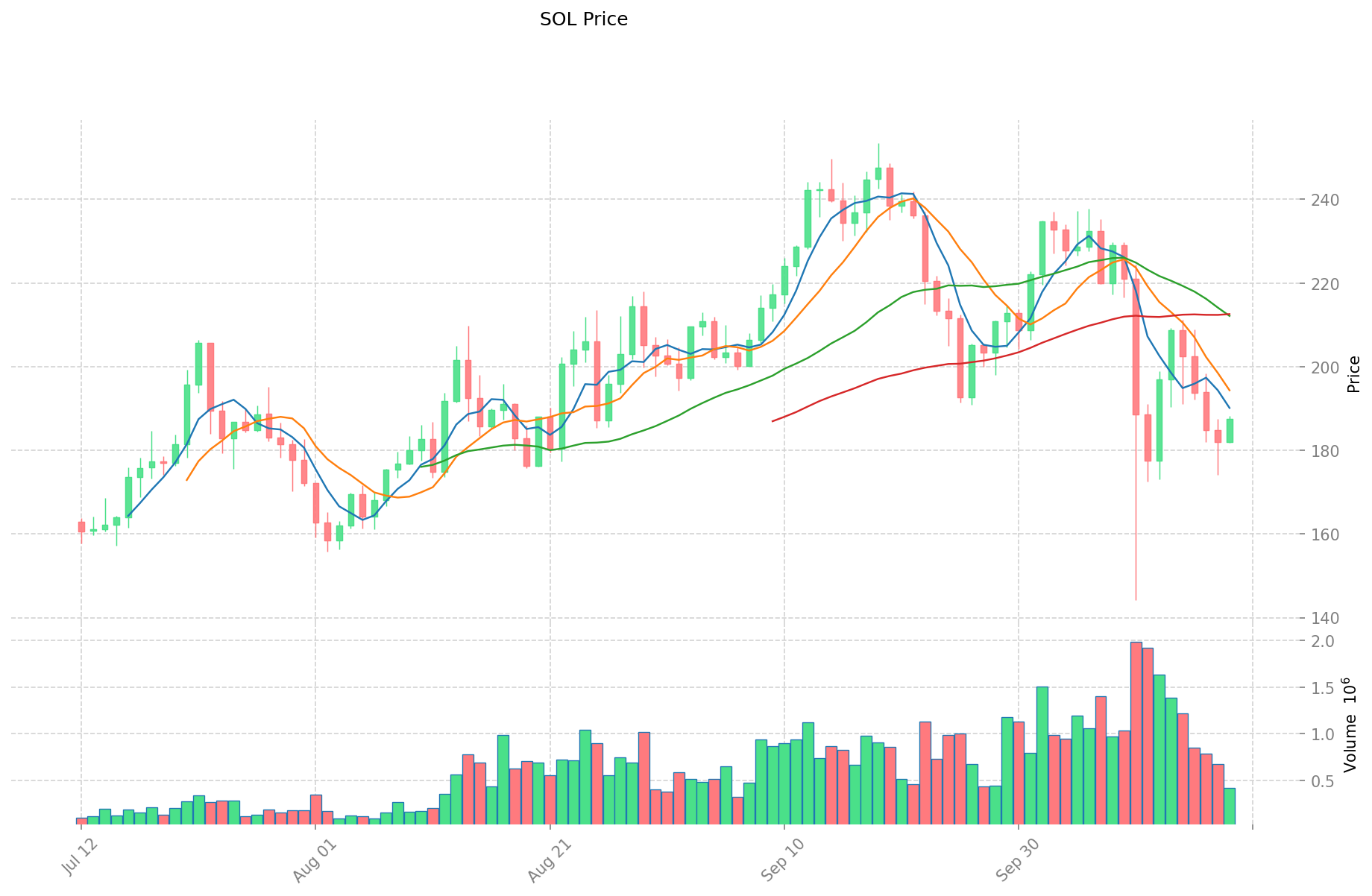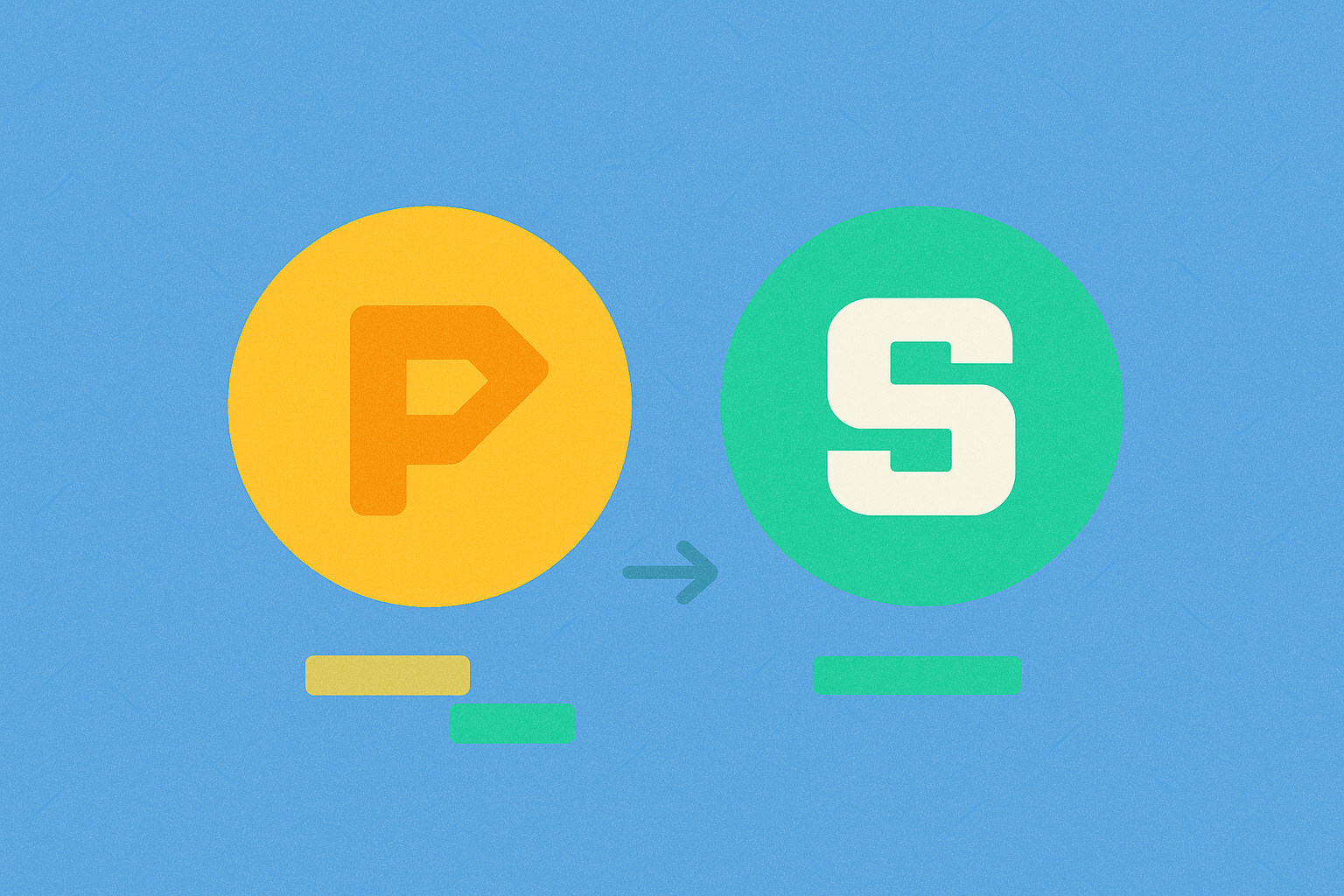FLUID ve SOL: Yeni Nesil DeFi Uygulamaları İçin Blockchain Ekosistemlerinin Rekabeti


Giriş: FLUID ve SOL Yatırımlarının Karşılaştırılması
Kripto para piyasasında FLUID ve SOL’un karşılaştırılması, yatırımcılar için gündemden düşmeyen bir başlıktır. İki varlık, hem piyasa değeri sıralaması, uygulama alanları ve fiyat performansı bakımından belirgin farklılıklar gösteriyor hem de kripto varlıklar içinde farklı konumlandırmalar sunuyor.
FLUID (FLUID): Çoklu zincir DeFi yönetim platformu Instadapp’ta borç verme protokolü olarak piyasaya sürülmesinden bu yana sektörde kabul görmüştür.
Solana (SOL): 2017’de piyasaya çıktığından beri, ölçeklenebilirliği merkeziyetsizlik ve güvenlikten ödün vermeden sağlayan yüksek performanslı blok zincir protokolü olarak tanınmaktadır.
Bu yazıda, FLUID ve SOL’un yatırım değerini; tarihsel fiyat trendleri, arz mekanizmaları, kurumsal benimseme, teknolojik ekosistemler ve gelecek öngörüleri üzerinden kapsamlı biçimde analiz ederek yatırımcıların en çok merak ettiği soruya yanıt arayacağız:
"Şu anda hangisi daha cazip bir yatırım?"
I. Fiyat Geçmişi Karşılaştırması ve Mevcut Piyasa Durumu
FLUID (Coin A) ve SOL (Coin B) Tarihsel Fiyat Trendleri
- 2025: FLUID, 24 Eylül 2025’te $11 ile tüm zamanların zirvesine ulaşırken, 10 Ekim 2025’te $2,017 ile en düşük seviyesini gördü.
- 2025: SOL, 19 Ocak 2025’te $293,31 ile rekor seviyeye çıkarak kripto piyasasında dikkat çekici bir büyüme sergiledi.
- Karşılaştırma: Bu piyasa döngüsünde FLUID, en yüksek seviyesi olan $11’den kısa süre içinde $2,017’ye sert bir düşüş yaşadı. SOL ise dalgalanmalara rağmen daha stabil kalıp yüksek fiyat seviyesini korudu.
Güncel Piyasa Durumu (19 Ekim 2025)
- FLUID güncel fiyat: $4,754
- SOL güncel fiyat: $187,44
- 24 saatlik işlem hacmi: FLUID $323.649,77653 vs SOL $77.231.322,73321
- Piyasa Duyarlılık Endeksi (Korku & Açgözlülük): 23 (Aşırı Korku)
Anlık fiyatları görüntülemek için tıklayın:
- FLUID güncel fiyatı Piyasa Fiyatı
- SOL güncel fiyatı Piyasa Fiyatı


II. FLUID ve SOL’un Yatırım Değerini Etkileyen Temel Unsurlar
Arz Mekanizması Karşılaştırması (Tokenomik)
- SOL: Enflasyonist model; başlangıçta %8 olan enflasyon oranı, yıllık %1,5 seviyesine kademeli olarak geriliyor
- FLUID: Sabit arz modeli; toplam 1 milyar token ile, benimsenme arttıkça kıtlık potansiyeli ortaya çıkıyor
- 📌 Tarihsel Eğilim: FLUID gibi sabit arzlı tokenlar boğa piyasalarında genellikle daha hızlı fiyat artışı yaşarken, SOL’un enflasyonist yapısı daha güçlü staking teşvikleri sunuyor fakat satış baskısı oluşturabiliyor.
Kurumsal Benimseme ve Piyasa Kullanım Alanları
- Kurumsal Portföyler: SOL, Grayscale, Jump Trading ve Multicoin Capital gibi büyük yatırımcılarla ciddi kurumsal benimseme elde etti; FLUID’in kurumsal desteği ise daha sınırlı görünüyor
- Kurumsal Kullanım: SOL, Visa, Shopify ve Stripe ile yaptığı iş birlikleri sayesinde geniş kurumsal uygulama alanına sahip; FLUID ise kurumsal piyasada likidite çözümü sunmaya odaklanıyor
- Regülatif Durum: SOL, bazı ülkelerde menkul kıymet olarak sınıflandırılması nedeniyle regülasyon incelemesine tabi; FLUID’in regülatif konumu daha az tartışmalı olsa da netlik açısından eksik
Teknik Gelişim ve Ekosistem Oluşumu
- SOL Teknik Yükseltmeleri: Son dönemde ölçeklenebilirlik ve ağ istikrarı için protokol iyileştirmeleri, validatör ekonomisinde büyük değişiklikler
- FLUID Teknik Gelişimi: Yapay zekâ ile desteklenen likidite toplama protokolü ve zincirler arası işlem yetenekleri; kurumsal düzeyde işlem altyapısına odaklanıyor
- Ekosistem Karşılaştırması: SOL, DeFi, NFT ve oyun sektörlerinde $1,5 milyar TVL ile güçlü bir ekosisteme sahip; FLUID ise kurumsal likidite için özel altyapı geliştiriyor ve ekosistemi daha yeni
Makroekonomi ve Piyasa Döngüleri
- Enflasyon Ortamında Performans: SOL, enflasyon verileriyle karmaşık bir ilişki sergiledi; FLUID’in sabit arz modeli teorik olarak daha iyi enflasyon koruması sunabilir ancak yeterli piyasa geçmişi yok
- Makro Para Politikası: Her iki token da Amerikan Merkez Bankası politika değişimlerine karşı duyarlı; SOL faiz değişimlerinde daha yüksek volatilite gösterdi
- Jeopolitik Faktörler: SOL, geleneksel finans sistemlerine alternatif arayan bölgelerde benimsenme gördü; FLUID’in sınır ötesi likidite odağı, uluslararası piyasa ayrışmasında avantaj sağlayabilir
III. 2025-2030 Fiyat Tahmini: FLUID vs SOL
Kısa Vadeli Tahmin (2025)
- FLUID: Temkinli $4,62 - $4,76 | İyimser $4,76 - $6,76
- SOL: Temkinli $104,83 - $187,20 | İyimser $187,20 - $224,64
Orta Vadeli Tahmin (2027)
- FLUID büyüme evresine geçebilir, tahmini fiyat aralığı $6,03 - $8,81
- SOL konsolidasyon evresine geçebilir, tahmini fiyat aralığı $122,07 - $224,86
- Temel etkenler: Kurumsal sermaye girişi, ETF’ler, ekosistem gelişimi
Uzun Vadeli Tahmin (2030)
- FLUID: Temel senaryo $9,22 - $11,25 | İyimser senaryo $11,25 - $12,60
- SOL: Temel senaryo $279,20 - $300,22 | İyimser senaryo $300,22 - $327,24
Feragatname: Bu bilgiler yalnızca eğitim amaçlıdır ve yatırım tavsiyesi değildir. Kripto para piyasaları son derece dalgalı ve öngörülemezdir. Yatırım yapmadan önce kendi araştırmanızı mutlaka yapınız.
FLUID:
| Yıl | Tahmini En Yüksek Fiyat | Tahmini Ortalama Fiyat | Tahmini En Düşük Fiyat | Değişim Oranı (%) |
|---|---|---|---|---|
| 2025 | 6,76204 | 4,762 | 4,61914 | 0 |
| 2026 | 7,490626 | 5,76202 | 5,3010584 | 20 |
| 2027 | 8,81300959 | 6,626323 | 6,02995393 | 39 |
| 2028 | 11,4251061166 | 7,719666295 | 4,4774064511 | 61 |
| 2029 | 12,92272137783 | 9,5723862058 | 7,849356688756 | 100 |
| 2030 | 12,5972602468328 | 11,247553791815 | 9,2229941092883 | 135 |
SOL:
| Yıl | Tahmini En Yüksek Fiyat | Tahmini Ortalama Fiyat | Tahmini En Düşük Fiyat | Değişim Oranı (%) |
|---|---|---|---|---|
| 2025 | 224,64 | 187,2 | 104,832 | 0 |
| 2026 | 222,3936 | 205,92 | 197,6832 | 9 |
| 2027 | 224,86464 | 214,1568 | 122,069376 | 14 |
| 2028 | 309,5101152 | 219,51072 | 149,2672896 | 17 |
| 2029 | 335,928230352 | 264,5104176 | 163,996458912 | 41 |
| 2030 | 327,23906313384 | 300,219323976 | 279,20397129768 | 60 |
IV. Yatırım Stratejisi Karşılaştırması: FLUID vs SOL
Uzun Vadeli ve Kısa Vadeli Yatırım Stratejileri
- FLUID: Kurumsal likiditeye ve zincirler arası DeFi potansiyeline odaklanan yatırımcılar için ideal
- SOL: Ekosistem büyümesi ve ölçeklenebilir blok zincir altyapısı arayanlar için uygun
Risk Yönetimi ve Varlık Dağılımı
- Temkinli yatırımcılar için dağılım: FLUID %20, SOL %80
- Agresif yatırımcılar için dağılım: FLUID %40, SOL %60
- Koruma araçları: Stablecoin dağılımı, opsiyonlar, çapraz para portföyleri
V. Potansiyel Risk Karşılaştırması
Piyasa Riskleri
- FLUID: Sınırlı işlem geçmişi ve düşük likidite nedeniyle volatilite riski
- SOL: Genel kripto piyasa duyarlılığı ve makroekonomik faktörlerden yüksek etkilenme riski
Teknik Riskler
- FLUID: Ölçeklenebilirlik ve çoklu zincirde ağ istikrarı
- SOL: Ağ tıkanıklığı ve potansiyel güvenlik açıkları
Regülasyon Riskleri
- Küresel regülasyonlar iki varlığı farklı şekilde etkileyebilir; SOL daha geniş ekosistem ve benimsenme nedeniyle daha fazla regülatif incelemeye maruz kalabilir
VI. Sonuç: Hangisi Daha Avantajlı?
📌 Yatırım Değeri Özeti:
- FLUID’in avantajları: Sabit arz, kurumsal likidite odağı, zincirler arası işlem yetenekleri
- SOL’un avantajları: Geniş ekosistem, kurumsal benimseme, ölçeklenebilirlik iyileştirmeleri
✅ Yatırım Tavsiyesi:
- Yeni yatırımcılar: SOL’u çeşitlendirilmiş portföyün küçük bir bölümünde değerlendirin
- Deneyimli yatırımcılar: FLUID ve SOL’un farklı değer önerileriyle dengeli bir strateji oluşturun
- Kurumsal yatırımcılar: FLUID’i özel likidite çözümleri, SOL’u geniş ekosistem maruziyeti için analiz edin
⚠️ Risk Uyarısı: Kripto para piyasası son derece oynaktır ve bu makale yatırım tavsiyesi değildir. None
VII. Sıkça Sorulan Sorular
S1: FLUID ve SOL arasındaki temel farklar nelerdir? C: FLUID, sabit arzlı (1 milyar token) bir borç verme protokolüdür ve kurumsal likidite ile zincirler arası işlem yeteneklerine odaklanır. SOL ise enflasyonist modele sahip, ölçeklenebilirlik ve DeFi, NFT, oyun alanlarında geniş ekosistemiyle öne çıkan yüksek performanslı bir blok zincir protokolüdür.
S2: Son dönemde hangi token daha iyi fiyat performansı gösterdi? C: Son veriler ışığında SOL, FLUID’e ($4,754) göre daha stabil ve yüksek bir fiyata ($187,44) sahip. SOL’un 24 saatlik işlem hacmi de çok daha yüksek.
S3: FLUID ve SOL’un arz mekanizmaları nasıl ayrışıyor? C: FLUID, toplamda 1 milyar token ile sabit arz modeline sahip olup benimsenme arttıkça kıtlık potansiyeli sunar. SOL ise başlangıçta %8, yıllık %1,5’e kademeli olarak düşen enflasyonist modele sahiptir.
S4: Hangi token daha fazla kurumsal benimsemeye sahip? C: SOL, Grayscale, Jump Trading ve Multicoin Capital gibi büyük yatırımcılarla önemli kurumsal benimseme elde etti. Visa, Shopify ve Stripe ile iş birlikleri sayesinde de geniş kurumsal uygulama ağına sahip. FLUID’in kurumsal desteği ise daha sınırlı.
S5: FLUID ve SOL için uzun vadede fiyat tahminleri nelerdir? C: 2030’da FLUID’in temel senaryoda $9,22 - $11,25, iyimser senaryoda $11,25 - $12,60 aralığına ulaşması bekleniyor. SOL’un temel senaryosu $279,20 - $300,22, iyimser senaryosu ise $300,22 - $327,24 aralığında öngörülüyor.
S6: Yatırımcılar portföy dağılımını FLUID ve SOL arasında nasıl yapmalı? C: Temkinli yatırımcılar için önerilen dağılım FLUID %20, SOL %80; agresif yatırımcılar için FLUID %40, SOL %60. Nihai dağılım ise kişisel risk toleransı ve yatırım hedeflerine göre belirlenmeli.
S7: FLUID ve SOL yatırımlarında başlıca riskler nelerdir? C: FLUID’de başlıca riskler sınırlı işlem geçmişi, düşük likiditeden kaynaklanan volatilite ve çoklu zincirde ölçeklenebilirlik sorunlarıdır. SOL ise piyasa duyarlılığına karşı daha hassas, ağ sıkışıklığı riski yüksek ve geniş benimseme nedeniyle daha fazla regülatif incelemeye açıktır.

2025 yılında Solana'nın temel gücü nedir: SOL'un çekirdek mantığı ve kullanım alanları nasıl analiz edilir

Jupiter (JUP) iyi bir yatırım mı?: Bu gelişmekte olan kripto paranın potansiyeli ve riskleri üzerine analiz

Zebec Protocol (ZBCN) iyi bir yatırım mı?: Değişen kripto ekosisteminde bu DeFi platformunun potansiyelini değerlendirmek

SOON (SOON) iyi bir yatırım mı?: Yükselen bu kripto paranın potansiyelini ve risklerini değerlendiriyoruz

Raydium (RAY) iyi bir yatırım mı?: Bu Solana tabanlı DeFi protokolünün potansiyeli üzerine analiz

Step Finance (STEP) iyi bir yatırım mı?: Gelişen DeFi ekosisteminde potansiyel getiriler ve riskler üzerine analiz

MOODENG vs SAND: 2024’te Hangi Meme Coin Piyasada Öne Çıkacak?

Spur Protocol Günlük Quiz Cevabı Bugün 18 Aralık 2025

Dropee 18 Aralık 2025 Günün Sorusu

DRIFT Nedir: Dijital Risk İstihbaratı ve Dolandırıcılık Takibi Hakkında Kapsamlı Bir Rehber

IOTX nedir: IoTeX Blockchain Platformu ve Yerel Kripto Parası Üzerine Kapsamlı Bir Rehber







